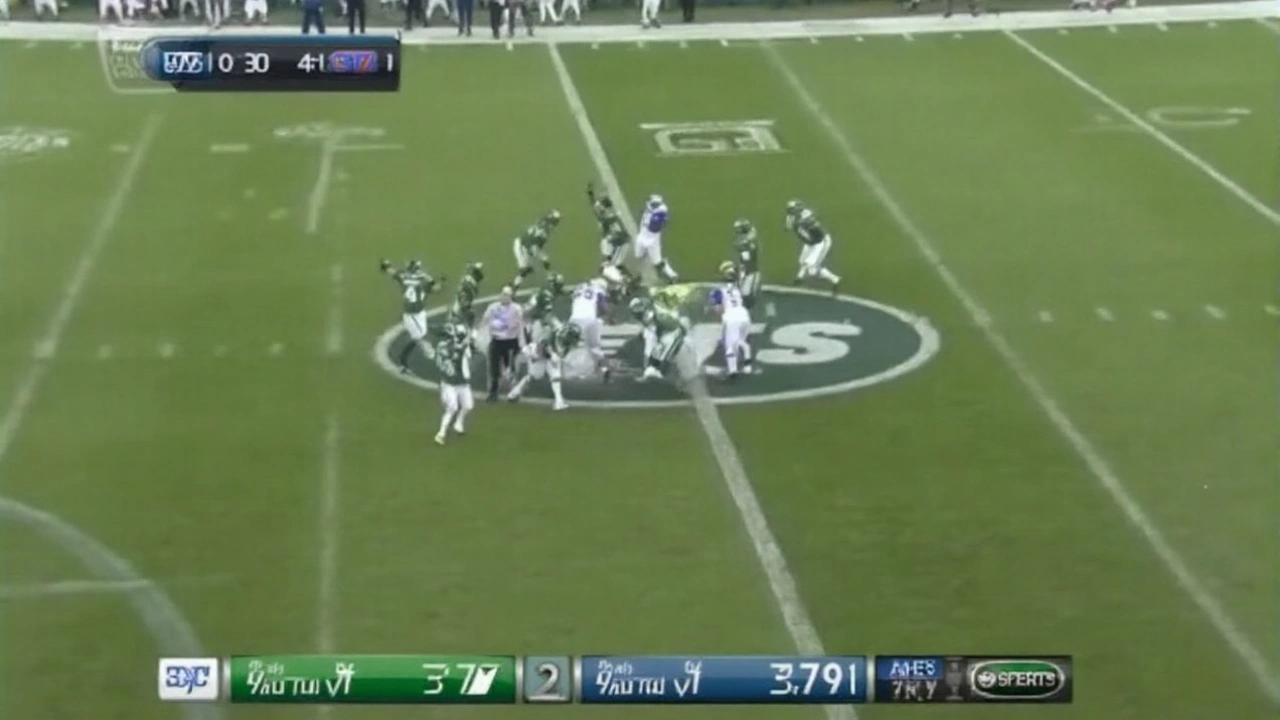Bills bully Jets 30-10: fast start, clean execution, and no let-up
Buffalo didn’t just beat New York. Buffalo removed the doubt. A 30-10 win in Week 2 made the gap between these AFC East rivals painfully clear: one team played on schedule, the other chased the game from the opening series and never caught up.
Josh Allen steered the offense with a calm, efficient day—no forced heroics, just a steady diet of timing throws, calculated scrambles, and smart checks at the line. The Bills mixed formations, leaned on motion to diagnose coverage, and kept the Jets off balance with a balanced script. When Buffalo wanted six, the call sheet delivered. When it wanted four to keep the chains moving, it got that too.
Elijah Moore, once a Jet, put a stamp on the storyline with a touchdown that drew a line under the day. It wasn’t a fluke play. It was the product of a quarterback who won the pre-snap battle, a route that separated on time, and a pocket that held long enough to make it count. For Moore, it felt like a quiet revenge game—no theatrics, just a clean score at the end of a clinical drive.
The Jets had flashes. Two straight plays for 28 yards offered a glimpse of rhythm. Then it all unraveled. A reverse to Smith lost 10 yards, wiping out the drive’s tempo. An offside penalty wiped out a completion. That sequence summed up the afternoon: brief momentum, then a self-inflicted detour that ended in a punt.
Buffalo’s defense played the percentages and won them. The front controlled the line of scrimmage, the edges set firm, and the second level swarmed. When New York tried to lean on the run, the Bills squeezed it into modest gains and pushed the Jets into long third downs. When New York spread the field, disguised coverage took away the first read and the rush closed the door.
James Cook gave the Bills exactly what they needed on the ground: steady early-down production, no wasted runs, and just enough burst to threaten the perimeter. That kept the playbook wide open and forced the Jets to respect the run even as Allen worked the intermediate zones. Buffalo didn’t chase explosives; it stacked small wins. By the time New York adjusted, the scoreline—and the clock—were working against them.
New York’s offense never found a rhythm. Protection was up and down. The timing between quarterback and receivers felt off. And the penalties were back-breaking. You could feel frustration in the play-calling too—like the staff was trying to steal chunk plays instead of building drives with simple completions and tempo. The reverse to Smith was the perfect example: a high-risk call at the wrong moment that turned a promising series into a scramble.
Special teams and field position tilted Buffalo’s way as the game wore on. The Bills won hidden yards, and with the defense getting stops, the offense didn’t have to drive the length of the field to score. That kind of complementary football usually shows up in the fourth quarter. On Sunday, it showed up early and never left.
The standings say plenty. Buffalo moves to 2-0 and sits alone atop the AFC East. New York drops to 0-2 with a lot to fix and not much time to do it. It’s early, sure, but the tone is set. The Bills look like a veteran group that knows its identity. The Jets look like a team still piecing it together on the fly.

How Buffalo did it—and why New York came apart
This wasn’t complicated. Buffalo won the line of scrimmage, won first down, and won the turnover and penalty battles. That’s football 101, but it’s also how you turn a Week 2 rivalry game into a stress-free finish.
- Scripted start: The Bills’ opening sequences felt sharp—motions, bunch sets, play-action, and quick reads to get Allen comfortable and the ball out fast.
- Moore’s moment: Elijah Moore’s touchdown came on a drive that looked like a walkthrough clinic—clean protection, a decisive throw, and spacing that created a free window.
- Cook’s consistency: James Cook hammered away for four- and five-yard gains, which kept Buffalo ahead of the sticks and let offensive coordinator Ken Dorsey call anything he wanted on second down.
- Defensive patience: Buffalo didn’t blitz itself out of position. The front four generated pressure, the linebackers scraped downhill, and the secondary forced the Jets to throw into tight windows.
On the other sideline, New York’s issues were less about talent and more about details.
- Drive killers: The 28-yard burst followed by a 10-yard loss on a reverse and an offside that erased a completion was a live-action lesson in how not to sustain offense.
- Pre-snap problems: Penalties turned manageable downs into must-pass situations. That let Buffalo hunt.
- Protection and spacing: When the Jets did have time, routes didn’t sync with reads. When routes popped open, protection leaked. The timing never matched.
- Play-calling strain: Chasing explosives made the floor too low. New York needed quick game, crossers, and easy outlets to settle in. It didn’t get enough of that.
One thing Buffalo did especially well: it leaned on tendencies without becoming predictable. On early downs, inside zone turned into split zone looks. Play-action mimicked the run fits perfectly. When the Jets sat on slants, Allen worked backside digs and outlet routes. When they dropped safeties to take away shots, Cook punished light boxes.
Defensively, the Bills disguised coverage on key third downs. They showed two-high shells that spun late, baiting the Jets into throws that were open for a beat and gone the next. The pass rush didn’t need gaudy sack numbers to affect the game. It compressed the pocket and forced off-platform throws that sailed or died.
Could the Jets have shifted tactics? Absolutely. Tempo could have helped the quarterback find rhythm. A heavier dose of quick game might have gotten the ball out before the rush arrived. More touches for the backs in the flat could have punished Buffalo’s depth drops. Instead, New York kept hunting the big swing and whiffed.
For Buffalo, this is what a team with January plans looks like in September. A clean, professional win with no drama late. The offense didn’t peak; it didn’t need to. The defense didn’t chase highlight plays; it squeezed New York until the clock ran out. That’s the blueprint you pack for the long season.
And yes, the subplots matter. Moore’s score against his old team is the kind of moment that lives in a locker room. It says: when you come here and do the work, you get paid off. It also says to the rest of the AFC: this passing attack has layers. Double the top option, and someone else will eat.
New York leaves with tough questions. Who sets the offensive tone when the script stalls? How does the staff cut the penalties and get the ball to playmakers without trickery? Can the line firm up enough to let the quarterback play on time? Those are solvable problems, but the clock is already ticking on an 0-2 start.
Buffalo, meanwhile, gets the benefits of a stress-free Monday. The tape will show little things to clean up—some red-zone calls, a couple missed opportunities downfield—but nothing that changes the big picture. This looks like a team built to stack wins and absorb injuries when they come.
Call it what it was: a statement game, two weeks into a long season, that still carried weight. The Bills vs Jets gap wasn’t about one trick play or one bad call. It was about a smarter plan, steadier execution, and fewer mistakes. Buffalo had all three. New York had none of them for long enough to matter.

